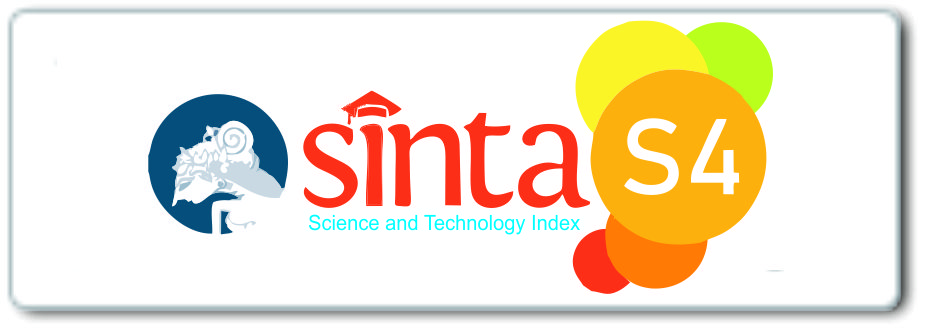Citra Diri dan Popularitas Artis
Abstract
displayed in media, and how an artist prepares him/herself. This study
also aims to know how the artists understand their popularity as the
result of news delivered by journalists in mass media. The method used
in this study is a qualitative method with dramaturgicaltheoryapproach.
Dramaturgy is actually under a larger perspective which is often called
by phenomenological perspective or interpretive perspective. The
results of this study indicate that self-image for the artist determines the
impression to be formed in the mass media. The better self-image
displayed, the bigger chance to get a good impression will be achieved.
Before dealing with a reporter for an interview, the artist did some
preparations, such as be neat and dressing up, cool their self down in
order to be in a good or stable emotions, and have a discussion with the
management to show a positive self-image in front of journalists. Artists
fullyunderstandthe meaning of popularity for themselves.The positive
popularity will also give a positive effect. Meanwhile, if they gained
negative popularity, it will impact to contract termination with third
parties, loss of earning opportunities through advertisement,off air,
losing fans,etc. This displayed self-image, if delivered positively by
journalists in news, it will give a positive
Keywords
Full Text:
PDFReferences
Ardianto, Elvinaro. dkk. Komunikasi Massa Suatu Pengantar (Edisi Revisi),
(Bandung: Simbiosa Rekatama Media, 2007)
Blumer, Herbert. Simbolic Interactionism, Perspective and Method. Los Angeles,
(California, Prentice-Hall, Inc. 1969)
Creswel, John W Qualitative Inquiry and Research Design, Choosing Among Five
Traditions, (California. Sage Publications, Inc. 1998)
Effendy, Onong Uchjana. Ilmu Komunikasi Teori dan Praktek, (Bandung: Remaja
Rosdakarya, 1992)
Fisher, Aubrey. Teori-teori Komunikasi, (Bandung: Remaja Rosdakarya, 1990)
Goffman, Erving. The Presentation of Self In Everyday Life{ New York.: Doubleday,
Haryatmoko Etika Komunikasi, Manipulasi Media, Kekerasan, dan Pornografi.
(Yogyakarta: Kanisius, 2007)
Kuswarno, Engkus. Fenomenologi, Konsepsi, Pedoman, dan Contoh Penelitian,
(Bandung: Widya Padjadjaran, 1999)
Littlejohn and Foss, Theoris of Human Communication, 9th Edition. Bellmont,
(California: Thomson Wadsworth, tt)
Moleong, Lexy J. Metodologi Penelitian Kualitatif, (Bandung: PT Remaja Rosda
Karya, 1990)
Mulyana, Deddy. Metodologi Penelitian Kualitatif: Paradigma baru Ilmu Komunikasi dan
Ilmu Sosial Lainnya, (Bandung: PT Remaja Rosdakarya, 2006)
-------, Ilmu Komunikasi, Suatu Pengantar (Bandung: PT Remaja Rosdakarya, 2005)
Poloma, Margareth M. Sosiologi Kontemporer, (Jakarta: PT Raja Grafindo Perkasa,
| Jurnal Dakwah dan Komunikasi Vol. 1 No. 2, 2016
Rakhmat, Jalaluddin. Metode Penelitian Komunikasi. (Bandung: PT Remaja
Rosdakarya, 2001)
Schutz, Alfred. The Phenomenology of the Social World, (Illinois: Northwetern
University Press, 1967)
Severin and Tankard Jr. Teori Komunikasi, Sejarah, Metode, dan Terapan di Dalam
Media Massa, (Jakarta. Kencana Prenada Media Group, 2007)
Sunaryo, Djoenaesih. Opini Publik, (Yogyakarta: Liberty, 1996)
Sumber lain:
Panduan Penyusunan dan Penulisan Tesis & Disertasi. Bandung: Program
Pascasarjana Tahun Akademik 2012– 2013.
Kamus Lengkap Indonesia – Inggris, Inggris – Indonesia. 1980. Bandung. Hasta
http://id.wikipedia.org/wiki/Sosialisasi
DOI: http://dx.doi.org/10.29240/jdk.v1i2.104
Refbacks
- There are currently no refbacks.
Copyright (c) 2016 Esther Meilany Pattipeilohy

This work is licensed under a Creative Commons Attribution-NonCommercial-ShareAlike 4.0 International License.
INDEXED BY:
 This work is licensed under a Creative Commons Attribution-NonCommercial-ShareAlike 4.0 International License.
This work is licensed under a Creative Commons Attribution-NonCommercial-ShareAlike 4.0 International License.















